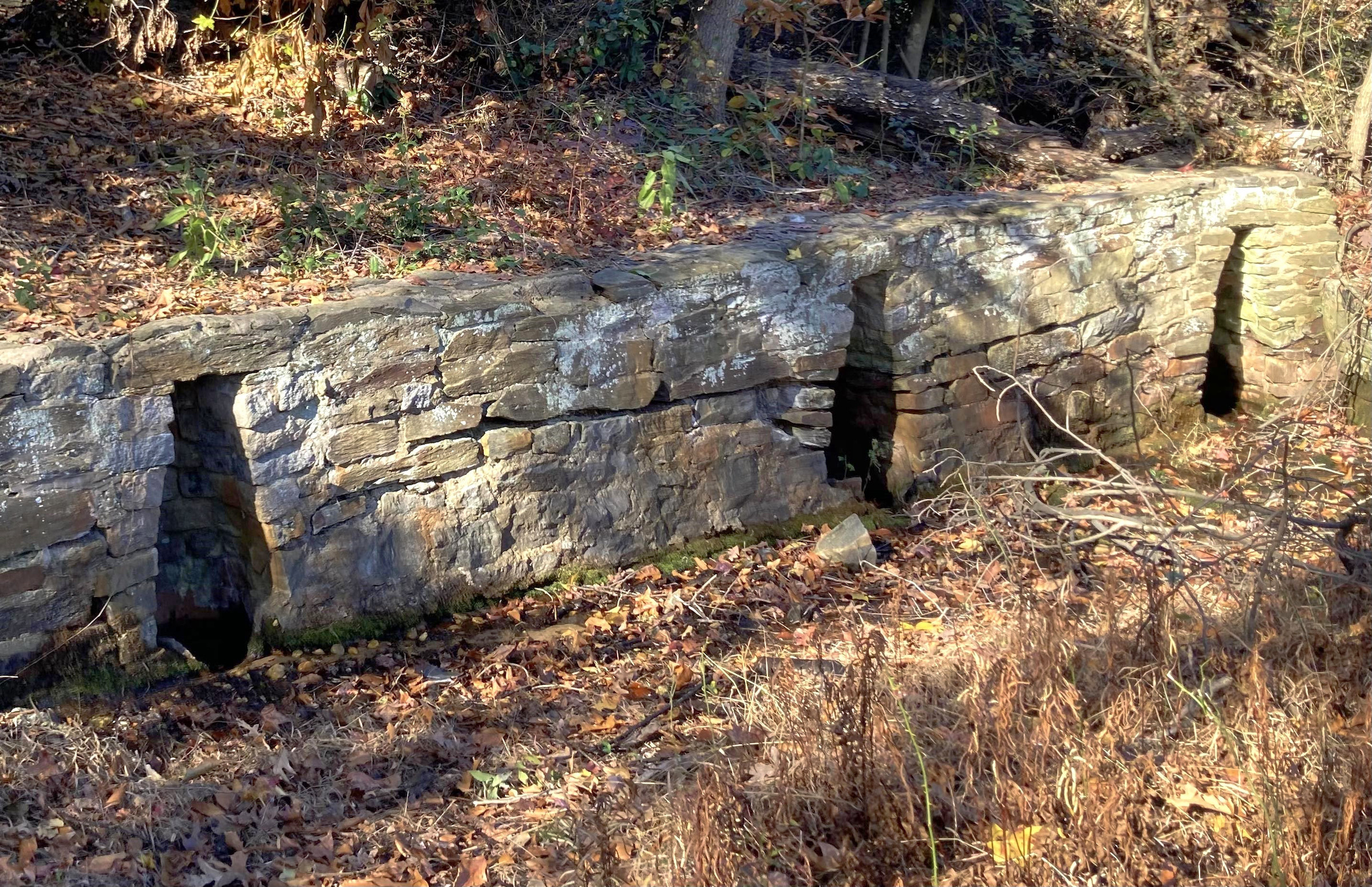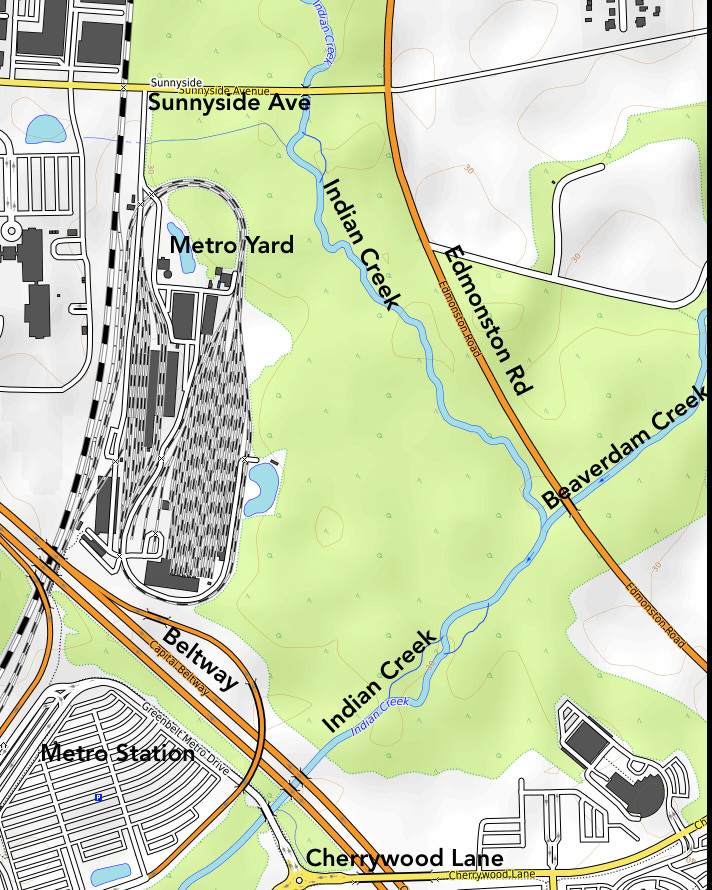We know there were once indigenous people who occupied the land in and around Greenbelt, but with all the development since, it can be hard to imagine their lives. In remembering those who were driven from the lands they cared for, there are specific places where one can feel more connected to them. Both bear the name Indian, because of the awareness that still existed among later settlers that these places had a strong Indigenous presence.
Indian Creek
Indian Creek runs through Greenbelt. It has a rich Native history. As reported by Elena Macias in the November 29, 2018, issue of the News Review, a major archaeological dig at a site known as Indian Creek V took place before the building of the Metro Rail Yard. Many sites with Native artifacts have been found along Indian Creek, but this one received special attention because it would soon be covered by the rail yard. Archaeologists were impressed by the wealth of artifacts and plant remains found.
Archaic Period
Analysis revealed that this site had been used for thousands of years, especially during the Archaic Period, from 8,000 to 1,000 B.C. In those days, agriculture had not yet been adopted by people in this area. They followed the seasons, spending time in different ecosystems, which allowed them a diverse diet. The Indian Creek site wasn’t a year-round village, but a camp where plant and animal foods were collected and tools crafted. The extensive wetlands surrounding the camp were a cornucopia of edibles and medicines to those people, whose knowledge of the flora and fauna was immense.
All the artifacts found at the Indian Creek V site are now held in the Jefferson Patterson Park’s Museum of Archaeology in St. Leonard, Md.
Woodland Period
After the Archaic Period, in the Woodland Period, people gradually started practicing gardening and farming. As they focused more on raising their food, they became more settled in villages, which were usually situated along major rivers such as the Patuxent and Potomac. They became known as the Piscataway. But visiting outlying camps was still very much a part of their way of life, and the abundant artifacts that were once easily found in Greenbelt testify to visits that were likely more recent. Past articles in the News Review mention generations of children collecting arrowheads at Indian Springs.
Indian Springs
Indian Springs was a beloved place visited for many years by early Greenbelters, who often walked over from the lake for picnics. A stone retaining wall for the springs was built by Public Works in the early 1940s. The building of the Beltway, though, left them in an isolated location on the other side of the highway where they are often forgotten. While the roar of the passing traffic is unwelcome company for visitors, the springs themselves are a place of rare peace in a busy world. Find the farthest northeast parking lot in the Golden Triangle and look to the woods. A sign gives some direction. Perseverance and agility are needed, since large tree branches now extend across the path. A number of large trees have been felled in the vicinity, but the clear water still wells up out of the dark pools and flows over the bright sand and smooth stones, tumbling down to its destination. Take some time there to contemplate our past and be refreshed.
Thanks to Greenbelt archaeologist Ben Fischler for the information he provided for this article.

During the Archaic period the following plants were gathered in Greenbelt for food and medicine:
Bedstraw Galium spp., Blackberry Rubus spp., Blue-eyed Grass Sisyrinchium graminoides, Bulrush Scirpus spp., Burreed Sparganium spp., Catchfly Silene spp., Chokecherry Prunus virginiana, Chufa Cyperus esculentus, Clover Trifolium spp., Copperleaf Acalypha virginica, Crabgrass Digitaria sanguinalis, Dodder Cuscuta gronovii, Eelgrass Zostera marina, Fern Pteridophyta, Flatsedge Cyperus spp., Geranium Geranium spp., Ground cherry Physalis spp., Hercules’ club Aralia spp., Pennyroyal Hedeoma pulegioides, Pennywort Hydrocotyle umbrellata, Pickerelweed Pontederia cordata, Ragweed Ambrosia spp., Scleria Scleria spp., Smartweed Polygonum spp., Solomon’s seal Polygonatum commutatum, Spikerush Eleocharis spp., Spurge Euphorbia spp., Sumac Rhus spp., Sweetgum Liquidambar styraciflua, Thistle Circium spp., Water lily Nymphaea spp., Waterhemp Acinda cannabinus, Water-milfoil Myriophyllum spp., Watershield Brasenia schreberi, Woodsorrel Oxalis stricta.
Source: Excavation of the Indian Creek V Site (18PR94) Prince George’s County, Maryland, Final Report, prepared by Charles H. LeeDecker, Brad Koldchoff, Louis Berger & Associates.




